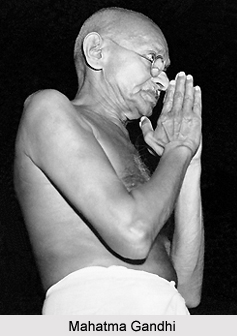 According to the history of West Champaran District, it was carved out of the old Champaran District in the year 1972. It suggests that West Champaran District was formed as a result of re-organization of old Champaran District in the state. It was formerly a subdivision of Saran District and then Champaran District with its headquarters at Bettiah. The history of West Champaran District says that Bettiah got its name from Baint (Cane) plants, which are commonly found in this district. Further, it also says that the name Champaran is a degenerate form of Champaka Aranya, a name which dates back to the time when the district was a vast forest tract of Champa (Magnolia) trees and was the abode of solitary ascetics.
According to the history of West Champaran District, it was carved out of the old Champaran District in the year 1972. It suggests that West Champaran District was formed as a result of re-organization of old Champaran District in the state. It was formerly a subdivision of Saran District and then Champaran District with its headquarters at Bettiah. The history of West Champaran District says that Bettiah got its name from Baint (Cane) plants, which are commonly found in this district. Further, it also says that the name Champaran is a degenerate form of Champaka Aranya, a name which dates back to the time when the district was a vast forest tract of Champa (Magnolia) trees and was the abode of solitary ascetics.
As per historical accounts, Champaran was occupied at an early period by races of Aryans descent and formed part of the country in which the Videha Empire ruled. After the fall of Videha Empire the district formed part of Vaishali of which Lichhavis were the most powerful and prominent. Ajatashatru, the emperor of Magadh, by annexed Lichhavis and occupied its capital, Vaishali. He extended his sovereignty over West Champaran, which continued under the Mauryan rule for the next hundred years. After the Maurya Empire, the Sunga dynasty and Kanvas ruled over the Magadh territories. The district thereafter formed part of the Kushana Empire and then came under Gupta Empire. Along with Tirhut, Harshavardhana possibly annexed Champaran during whose reign the Palas of Bengal were in the possession of eastern India and Champaran formed a part of their territory.
The history of West Champaran District during the late medieval period and the British period is linked with the history of Bettiah Raj. Bettiah Raj has been mentioned as a great estate. It traces its descent from Ujjain Singh and his son, Gaj Singh, who received the title of Raja from Shah Jahan, Mughal Emperor (1628-58). The family came into prominence as independent chief in the 18th century during the downfall of the Mughal Empire. Bettiah Raj was succeeded by the descendents of Raja Jugal Kishore Singh. Harendra Kishore Singh, the last Maharaja of Bettiah, died in 1893.
Rise of nationalism in Bettiah in early 20th century is intimately connected with indigo plantation. Further, by 1918 the long standing misery of the indigo cultivators came to an end and Champaran became the hub of Indian National Freedom Movement and the launch pad of Satyagraha movement of Mahatma Gandhi.



















